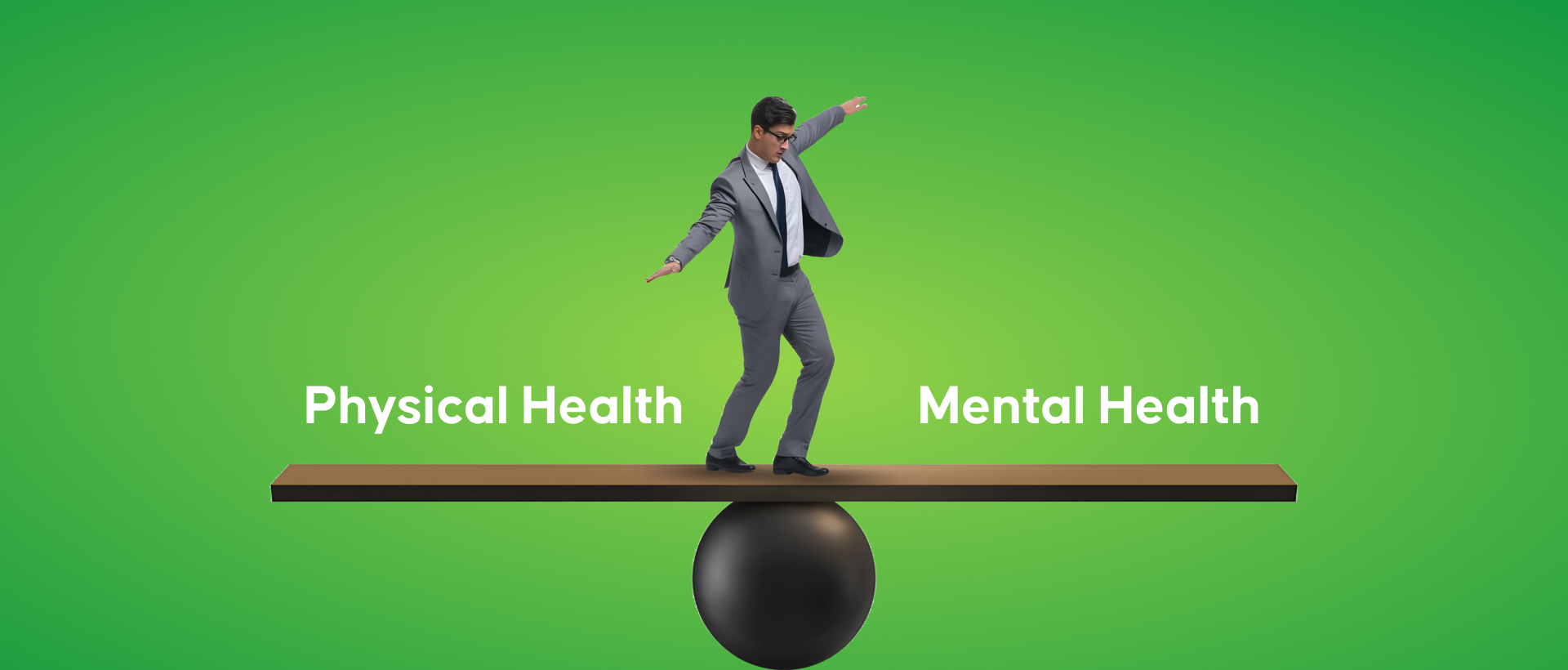
Mental and Physical Health at Work
This article summarizes a recent report Mental Health at Work - WHO/ILO Joint Policy, 2024 by the World Health Organization (WHO) and the International Labor Organization (ILO), along with reflections on its importance for worker well-being. While being employed gives people income, purpose, social support, and new skills, based on its nature, it can also bring serious risks when the environment is unsafe, unhealthy, or overly stressful.
The Shocking Toll of Work-Related Deaths and Illnesses
A detailed study (WHO/ILO) covering 17 years across 183 countries shows that:
- 1.88 million people died in 2016 from causes related to their work environment.
- Over 745,000 deaths resulted from working more than 55 hours per week. Long hours are a known risk factor, increasing the chances of stroke by 35% and heart disease by 17%.
- The majority of these fatalities are in low and middle-income countries, where workplace regulation enforcement and healthcare access are often limited.
- Older workers (55+) and men are most affected.
These are not just numbers, they are preventable tragedies. Behind each statistic is a family, a community, a future lost.
Long Hours, Deadly Consequences
Even though many studies and experts around the world have warned about the dangers of overworking, some workplaces still support unhealthy work habits.This problem has become very clear in India, where reports from the tech industry show that some employees are working up to 70 hours a week. According to a survey conducted by Blind in March 2025, 72% of Indian IT professionals routinely exceed the legal 48-hour workweek limit, with 25% working over 70 hours weekly.As a result, 83% report experiencing burnout.Without proper support, this kind of workload can lead to serious burnout, poor mental health, and even death in extreme cases.
One example that raised a lot of concern was a public call to embrace a 90-hour workweek, which was supported by leadership position. When such messages come from leaders, it puts pressure on managers and teams to push themselves too hard, just to prove their dedication.
Leadership plays a big role in shaping company culture. When leaders praise long hours instead of encouraging smart and balanced work, it can create a sense of guilt around taking breaks or setting boundaries. Over time, this approach does not build lasting commitment. Instead, it often leads to resentment and reduced motivation. A culture that values output more than well-being can be harmful in the long run, not only for employees but for organizations as well. Workers experiencing burnout may become less productive, more likely to leave their jobs, and more vulnerable to both physical and mental health challenges.
To fix this, leaders and managers must set better examples. They need to respect work-life balance, encourage regular breaks, and focus on healthy, realistic goals. It's not about working more, it's about working better and making sure people stay well while doing it.
Toxic Exposures and Workplace Injuries
In addition to long hours, millions of workers face daily exposure to toxic dust, chemicals, and airborne hazards—especially in industries like construction, mining, manufacturing, and agriculture.
- Many workers breathe in lethal substances that may cause lung cancer, COPD, and occupational asthma.
- Recent tragedies like the Jharkhand coal mine accident in India (2023), caused by exposure to toxic gasses and unsafe working conditions, resulted in preventable fatalities.
- The Assam chemical plant fire (2024) highlighted the deadly consequences of poor safety standards, mass chemical exposure led to injuries and loss of life.
It's clear that safe environments and strict safety protocols are essential. Yet, in many informal sectors, safety enforcement remains weak, and access to protective gear is limited.
The Vulnerability of Older and Informal Workers
Older adults are staying in the workforce for more years, often working well past the traditional retirement age. This is happening for many reasons. People are living longer and may need to keep working to support themselves. Some do not have enough savings or access to pensions, making it hard to retire. In many places, especially in the informal sector, there is little or no social protection. Others may choose to work longer for personal reasons, such as staying active or socially connected.
However, continuing to work into older age can bring health risks, especially in jobs that involve physical effort. Without changes to support their needs, older workers may face fatigue, injuries, and long-term health problems. It is important to adjust work tasks, offer regular health check-ups, and create policies that protect their well-being.
At the same time, more than half of the world’s workers are in the informal sector. These jobs often do not follow labour laws or safety rules. Informal workers tend to work long hours, earn low wages, and have no access to health care or social benefits. Many face unsafe working conditions and unfair treatment. Without proper protection, they are at high risk of both physical and mental health problems. Stronger policies and better support systems are needed to keep them safe and healthy.
The Economic and Social Impact of Neglect
Ignoring workplace safety and mental health doesn't just harm people, it also costs a huge amount of money. Every year, mental health problems at work lead to over ₹83 lakh crore in lost productivity worldwide. That’s money lost because people are too stressed, unwell, or burned out to work properly.
Depression and anxiety alone cause people to miss about 12 billion workdays each year. These issues also play a role in more than 700,000 suicides globally every year (WHO/IL)O, which is a heartbreaking reminder of how serious mental health struggles can be.
When mental health and safety are ignored, it affects more than just individual workers. It puts pressure on healthcare systems, increases inequality, and slows down a country’s economic growth. Taking action to protect workers’ mental well-being isn't just the right thing to do—it’s also smart for the economy.
What Can We Do? Building Safer, Healthier Workplaces
The solution requires a multi-stakeholder approach where governments, employers, workers, civil society, and health service providers all have critical roles.
1. Strengthening Laws and Policies
Governments need to enforce limits on work hours, as working beyond 55 hours a week increases health risks. To address this, clear workplace mental health policies should be established, integrating mental health into occupational safety frameworks alongside physical safety. In India, the Factories Act, 1948 limits working hours and ensures safety but lacks mental health provisions.
The Mental Healthcare Act, 2017 acknowledges mental health but doesn’t address workplace regulations.
Similarly, the Companies Act, 2013 focuses on corporate governance but doesn’t directly cover mental health. Integrating mental health into laws like the Factories Act and creating specific workplace mental health policies under the Companies Act will help protect workers' well-being, fostering a balanced environment where health is prioritized.
2. Organizational Interventions and Risk Management
Employers must embed psychosocial risk management into their safety protocols. Key measures include:
- Reshaping work environments: managing workloads, scheduling flexible hours, and reducing job strain.
- Training managers on mental health literacy, how to recognize early signs of distress, and how to support employees.
- Promoting supportive culture: zero tolerance for harassment, bullying, and discrimination.
- Providing protective equipment and safe physical environments.
3. Promoting Mental Health and Well-being
WHO recommends specific interventions:
- Training workers in mental health literacy, reducing stigma.
- Offering psychosocial support and stress management tools.
- Supporting workers with existing mental health conditions through reasonable accommodations, return-to-work programs, and supported employment.
Recent examples from India include initiatives to improve awareness and support vulnerable workers—but much more needs to be done at both policy and organizational levels.
4. Leadership and Cultivating a Culture of Safety
Senior management must champion safety initiatives, allocate resources for mental health programs, and foster an inclusive, stigma-free environment where workers feel safe to seek help.
5. Legal and Regulatory Enforcement
Governments should monitor compliance with safety laws, implement regular inspections, and enforce penalties for violations. Improving capacity of labor inspectors and integrating mental health indicators into workplace audits are critical steps.
The Path Forward: Why It’s Urgent
The WHO/ILO report emphasizes that protecting mental and physical health at work is not optional, it’s a fundamental human right and a cornerstone for sustainable economic development.
- Inaction is costly for individuals, families, businesses, and society as a whole. We must shift the culture from glorifying overwork to valuing well-being and safety.
- What Can Leaders, Employers, and Workers Do Today?
- Speak up for safer, healthier workplaces.
Implement policies that restrict excessive work hours.
Train managers and workers on mental health awareness.
Support vulnerable and informal workers through targeted programs.
Enforce existing laws and create stricter compliance mechanisms.
- Work should be a source of growth, purpose, and dignity—not suffering and preventable death. The data and examples from around the world, especially recent incidents in India, remind us that the cost of neglecting health at work is too high.
Let’s build workplaces where safety, respect, and health are priorities—not just slogans, but concrete actions that save lives and foster thriving societies.
References
- World Health Organization (WHO) & International Labour Organization (ILO). WHO/ILO Joint Estimates of the Work-related Burden of Disease and Injury.
- International Labour Organization (ILO). Safety and Health at Work.
- WHO & ILO. (2024). Mental Health at Work – WHO/ILO Joint Policy Brief. International Labour Organization.





